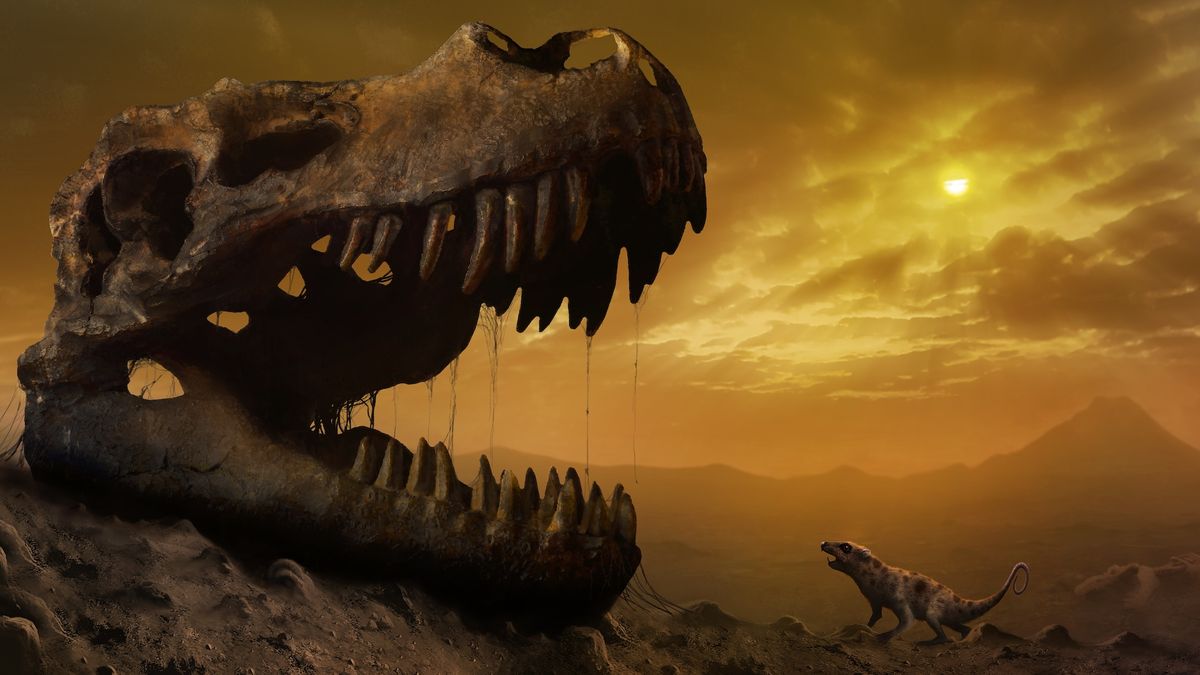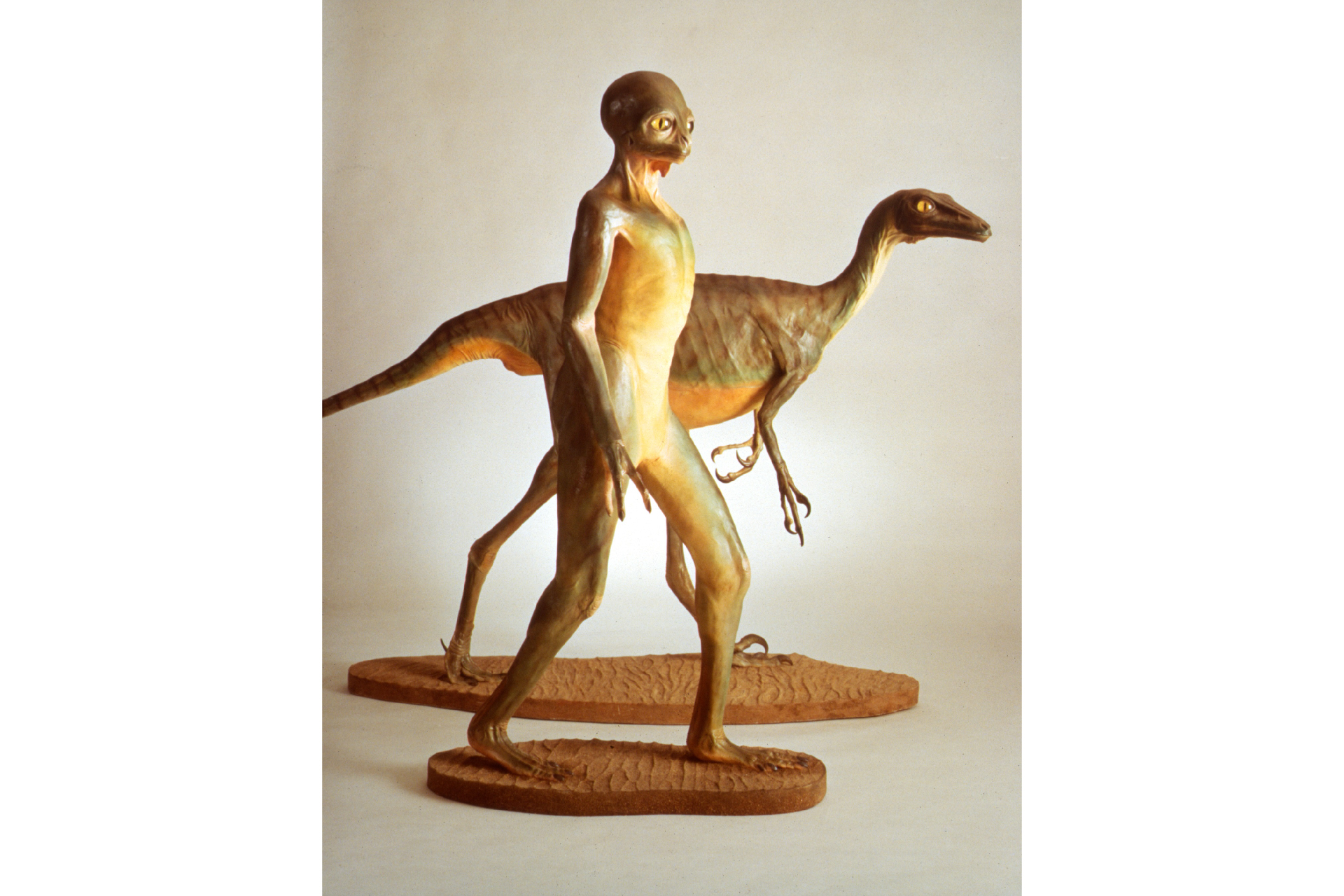
On a momentous day 66 million years ago, the dinosaurs, who had thrived on Earth for approximately 165 million years, faced an unexpected calamity. A colossal asteroid about 9 miles wide (15 kilometers) impacted what is now Mexico, unleashing devastating tsunamis, raging wildfires, and acid rain. This catastrophe produced massive amounts of debris that shrouded the sky, blocking sunlight. Consequently, around 75% of Earth’s species, including the non-avian dinosaurs, became extinct within merely months after the event.
But what if the asteroid had not collided with our planet? Would the dinosaurs have continued to dominate? Might they have survived the ice ages and evolved greater intelligence?
Paleontologists suggest that dinosaurs could have persisted and evolved even further. Having survived for 165 million years, they adapted to various environmental challenges, including fluctuating sea levels and intense climatic changes, as noted by Steve Brusatte, a paleontology professor at the University of Edinburgh. Yet, such continued dominance would have hindered the evolution of early mammals.
Some researchers argue that dinosaurs would have eventually faced extinction due to environmental changes that appeared to outstrip the formation of new dinosaur species. Brusatte, however, remains unconvinced.
“From my fossil collections of the last dinosaurs, it’s evident that globally, dinosaurs exhibited rich diversity and abundance,” Brusatte shared with Live Science. “They were clearly thriving and abundant just before the asteroid impact.”
Related: What unfolded when the asteroid struck Earth, leading to the extinction of the dinosaurs?
Could Dinosaurs Have Survived an Ice Age?
Would dinosaurs have thrived during frigid periods like ice ages? Although some dinosaurs residing in snowy climates managed to persist, the majority did not. Brusatte opines that certain dinosaurs could have adapted to harsh new environments.
“Many dinosaurs were feathered, enabling them to insulate themselves like mammals do,” Brusatte explained. Additionally, certain species like the Tyrannosaurus rex were likely warm-blooded, research indicates, suggesting they were not entirely vulnerable to climatic shifts.
Furthermore, dinosaurs might have developed additional adaptations to withstand cold during extreme weather events. Take mammoths, for example. Evolving around 5 million years ago in South Africa, they began developing thick, woolly coats to adapt to much colder climates like Eurasia during the last ice age approximately 800,000 years ago.
Could Dinosaurs Have Developed Greater Intelligence?
With enough time for evolution, might dinosaurs have progressed into more intelligent beings? In a speculative study from 1982, Canadian-American paleontologist Dale Russell contemplated whether certain troodontid dinosaurs could have developed sentience if they had not succumbed in the end-Cretaceous extinction event. He referred to them as “dinosauroids” due to their projected humanoid characteristics. Russell based this hypothesis on a particular species of troodontid that exhibited a,”large brain, stereoscopic vision, opposable fingers, and bipedal structure,” speculating it might have developed an “encephalization quotient akin to Homo sapiens” had it survived. His creative partner, Ron Séguin, crafted a reconstruction,depicting a green-skinned creature.

However, many paleontologists have since regarded this concept as improbable, labeling it overly anthropomorphic. A 2023 study found that “neither Troodon nor its counterparts could have given rise to a primate-like lineage capable of human-level intelligence.”
Nonetheless, birds, which are modern-day descendants of dinosaurs, exhibit impressive cognitive abilities.
“Contemporary birds, the only surviving dinosaurs, display remarkable intelligence,” Brusatte noted. “In fact, they possess more neurons in their brains than the average mammal. Whether they could ever achieve human-like cognition remains uncertain.”
Impact on Mammals:
If the asteroid had missed Earth, mammalian evolution would likely have faced significant challenges. Brusatte posits that had large dinosaurs survived, the primitive, rodent-like mammals living alongside them might not have evolved into larger forms.
“I suspect that mammals would have remained predominantly small for countless more years,” he stated. “However, with cooler temperatures and the eventual last Ice Age, smaller mammals—being warm-blooded and furry—might have eventually thrived and become larger, while giant dinosaurs could have faded away.”
Related: Are Birds Considered Reptiles?
However, this does not guarantee that humans would have arisen. “Though small mammals might have thrived, the emergence of human beings would have been unlikely,” noted paleontologist and University of Chicago biology professor Paul Sereno in an email interview with Live Science.
“We evolved in a mammalian ecosystem that could never have existed while large non-avian dinosaurs roamed,” Sereno asserted. “Our existence was not a foregone conclusion.”
It was indeed the extinction of terrestrial dinosaurs—along with the possible extinction of competing mammals—that allowed our primate ancestors a pathway to prosper and evolve, as found in a 2021 study. Had the asteroid not impacted Earth, it’s likely that the evolution of humans, as we understand it, would have never occurred.
“The trajectory of history would have been fundamentally altered,” Brusatte concluded. “Our direct ancestors definitely would never have had the opportunity to evolve.”









